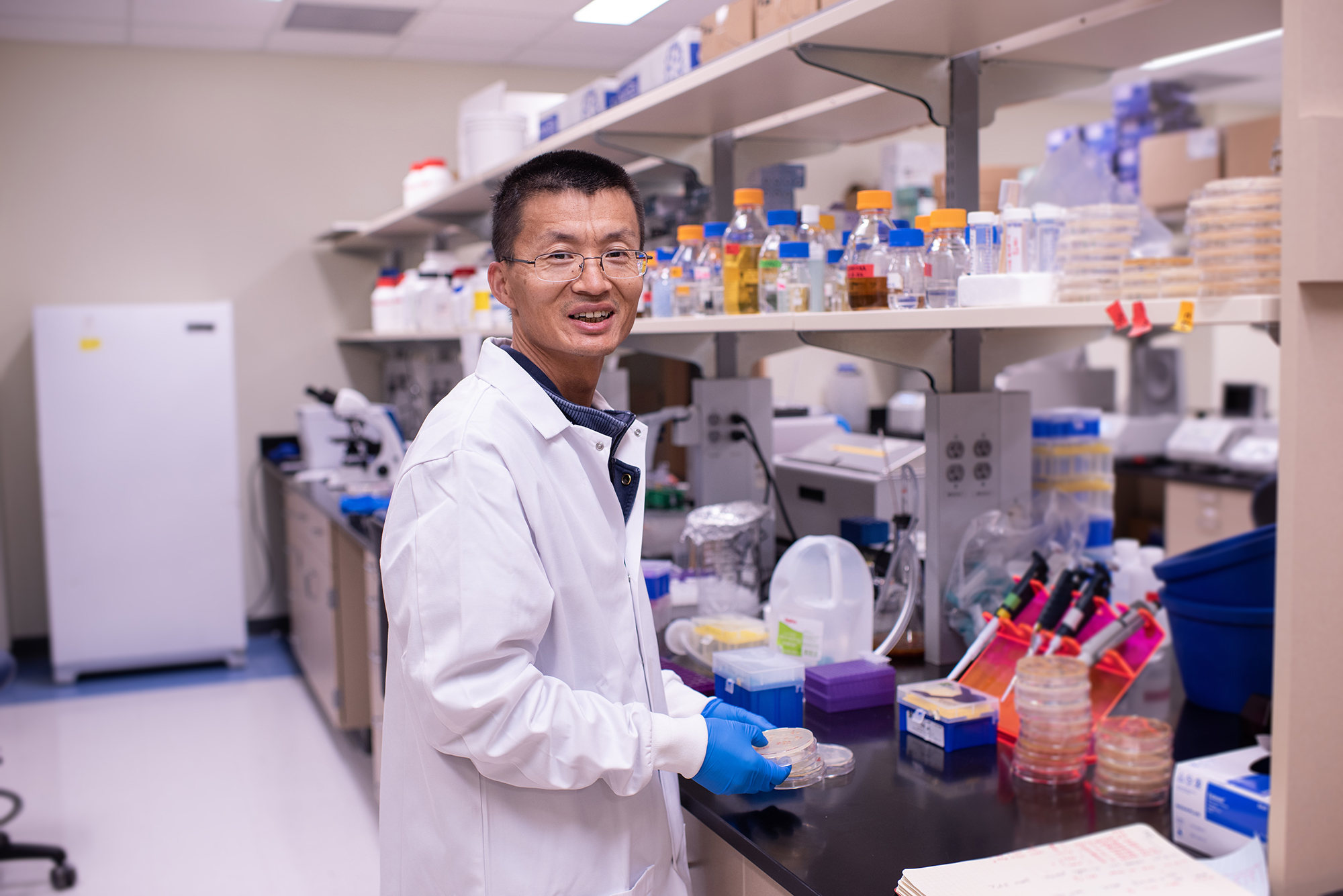
Chuanhe Yu, Ph.D.
Assistant Professor
Chromatin, which contains both genetic and epigenetic information, must be stably transmitted to daughter cells during mitotic cell divisions to maintain genome integrity and cell identity. Nucleosomes, the basic repeating unit of chromatin, regulate access to the DNA for replication, repair and transcription. Histone chaperones, histone modification enzymes and chromatin remodeling complexes are involved in chromatin replication. Mutations in chromatin regulators lead to genome instability and are frequently associated with human cancers. Furthermore, altered expressions of histone chaperones, which are involved in DNA replication-coupled nucleosome assembly, have been linked to breast, gastrointestinal, laryngeal, and prostate cancers. Thus, understanding how nucleosome assembly pathways are regulated will not only reveal how epigenetic information is transmitted to daughter cells, but will also provide new opportunities to understand human cancer caused by the alteration in epigenetic states.
Previous studies on nucleosome metabolism mainly focus on the assembly and deposition of newly synthesized histones, including (H3-H4)2 tetramers. How parental histone (H3-H4)2 tetramers are transferred and assembled into nucleosomes behind DNA replication forks remains unclear. The current dominant model proposes that parental (H3-H4)2 tetramers are randomly distributed onto leading and lagging strands of DNA replication forks based on the experiments of pharmacological inhibition of the new protein synthesis. However, this model has never been tested in a non-stress condition, and histone deposition at replication forks originating from different loci may be different. Moreover, the protein(s) responsible for transferring parental (H3-H4)2 tetramers have not been identified.
We find that parental histones are distributed to both the leading and lagging strand arm of the fork with a slight bias towards the lagging strand. Intriguingly, in cells depleted of Dpb3 and Dpb4, which are non-catalytic subunits of the leading strand DNA polymerase, Pol-epsilon, the bias of parental nucleosome segregation to the lagging strand was markedly enhanced. Polepsilon thus appears to mediate the recruitment of parental nucleosomes to the leading strand.
Mutation of the histone H3-H4 binding domain in the Mcm2 subunit of the replicative helicase causes a strong bias of parental nucleosome partitioning to the leading strand, indicating that Mcm2 targets parental nucleosomes for deposition on the lagging strand. that parental H3-H4 tetramers bind to Mcm2, which travels along the leading-strand template, and are then transferred to the lagging strand by the Mcm2-Ctf4-Pola complex for nucleosome assembly.
While cellular DNA replication was not grossly affected during the mitotic cell cycle by asymmetric nucleosome partitioning, we found that silenced mating type locus was significantly disturbed in the Dpb3/ Dpb4 and mcm2 mutant budding yeast cells. Together our studies thus suggest that parental nucleosome segregation is determined by a balance of replisomeintrinsic histone chaperone activities. Modulation of individual histone chaperone activities at the fork may therefore provide a potential mechanism for the asymmetric distribution of epigenetic marks to determine cell fate in development.
Current research projects:
- Candidate gene screening on parental histone assembly in yeast
- Functional analysis on epigenetic inheritance of DNA polymerase and MCM helicase
- New approaches to study DNA replication coupled process
Publications:
Yang, Y. & Yu, C. Liquid phase condensation directs nucleosome epigenetic modifications. Signal Transduct Target Ther 5, 64 (2020).
